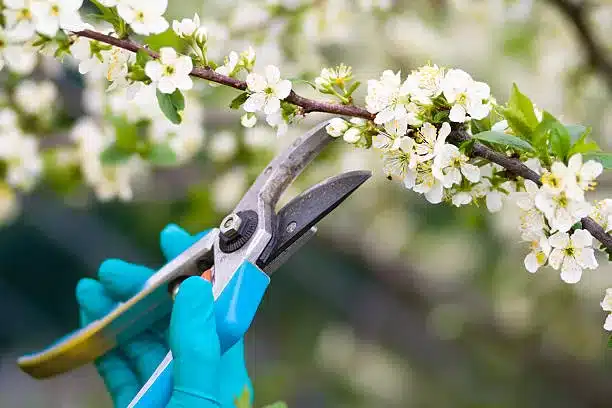“Unleash the power of your garden with our comprehensive Deadheading flowers list from A-Z! From Asters to Zinnias, learn about the surprising impact of this simple technique.
Boost flower growth, prolong the bloom period, and transform your garden into a vibrant, thriving space. Don’t miss out on the best-kept gardening secret – discover the wonders of deadheading today!”
Deadheading is the gardening practice of removing flowers from plants when they are fading or dead. It benefits plants by promoting growth and prolonging the blooming period. Here’s a list of common flowers from A-Z that benefit from deadheading:
“Unlock the Secret to Blooming Asters: Master the Art of Deadheading!”
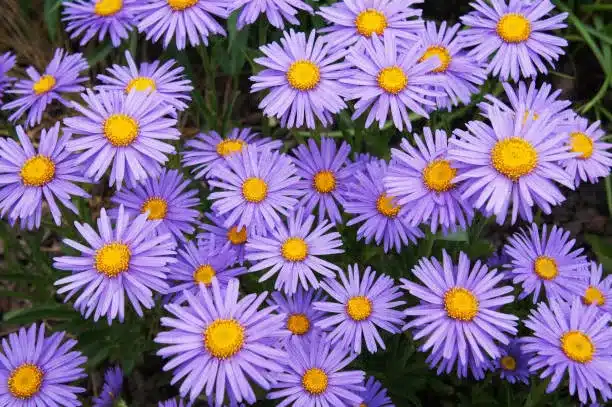
Deadheading Asters involves a simple yet effective technique that promotes prolonged flowering and a healthier plant. Begin by identifying the faded or dead flowers.
Using a pair of clean, sharp secateurs, make a cut just above the next leaf or budding flower on the stem. It’s best to deadhead Asters throughout their blooming period, typically late summer through fall, to encourage the growth of new buds.
This technique ensures your Asters produce vibrant blooms, enhancing the overall beauty of your garden.
FAQs:
1. Why is deadheading Asters important?
Deadheading Asters encourages the plant to focus its energy on new growth and flower production rather than seed development. This results in more abundant, vibrant blooms and a prolonged flowering period.
2. When is the best time to deadhead Asters?
The best time to deadhead Asters is throughout their blooming period, as soon as the flowers start to fade or die. Regular deadheading during this time will help to ensure continuous, healthy blooms.
“Revitalize Your Begonias with Our Comprehensive Deadheading Flowers List!”
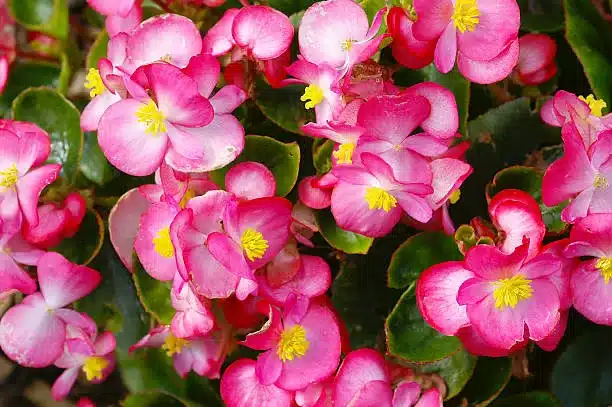
Begonias, known for their vibrant, lush blooms, greatly benefit from proper deadheading. Start by identifying the spent blooms.
Carefully pinch off these old flowers at the base of their stem using your fingers or a pair of clean, sharp gardening shears. For best results, consistently deadhead Begonias throughout their flowering season, typically late spring to fall.
This simple technique diverts the plant’s energy towards creating fresh, bright blossoms and lush foliage, adding a burst of color to your garden.
FAQs:
1. How often should I be deadheading Begonias?
It’s recommended to deadhead Begonias regularly throughout their blooming season. Removing spent flowers as soon as they begin to fade helps maintain the plant’s vitality and promotes continuous blooming.
2. Can I harm my Begonias by deadheading incorrectly?
Yes, improper deadheading, such as leaving too much of a stem or creating ragged cuts, can potentially harm the plant by exposing it to diseases. Always make sure to use clean, sharp tools and cut or pinch close to a leaf node or joint for optimal plant health.
“Unveil a More Vibrant Garden: Cosmos Deadheading Techniques”
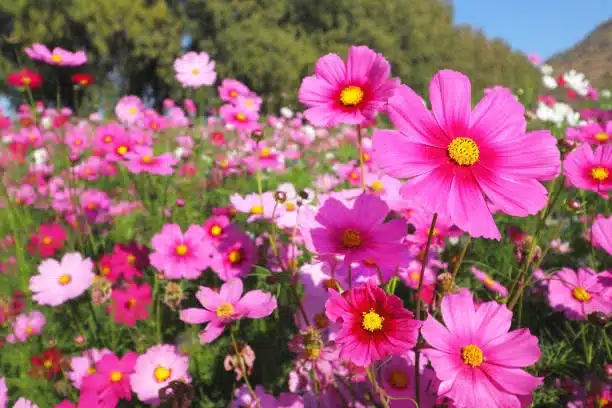
Cosmos are stunning, easy-to-grow flowers that respond remarkably well to deadheading. When a Cosmos flower fades, track the stem down to the first set of leaves and make a clean cut with a sharp, sterilized garden shear.
Performing this simple task regularly during the blooming period, usually from late spring to frost, will extend their flowering season.
By featuring Cosmos in your deadheading flowers list, you’ll ensure these vibrant blossoms fill your garden with color and attract pollinators for months on end.
FAQs:
1. Why should I include Cosmos in my Deadheading Flowers List?
Deadheading Cosmos promotes healthier, more abundant blooms. It also prevents the plant from going to seed prematurely, thus extending the flowering season.
2. How frequently should Cosmos be deadheaded?
Ideally, you should deadhead Cosmos as soon as you notice faded or spent blooms. Regular deadheading throughout the blooming period will ensure continuous flowering.
3. Can I deadhead Cosmos using my fingers?
Yes, you can. Although using gardening shears ensures a clean cut, you can also carefully pinch off the spent blooms with your fingers if the stems are tender enough.
“Boost Your Garden’s Brilliance: Discover Dahlia Deadheading Techniques in Our Deadheading Flowers List!”

Dahlias, with their magnificent and diverse blooms, make a stunning addition to any garden, especially when included in a deadheading routine.
Start the process by identifying the spent blooms, then trace the stem down to the next set of leaves or a budding flower. Using clean, sharp pruning shears, cut the stem just above this point.
Regular deadheading of Dahlias throughout their blooming season (typically from mid-summer to the first frost) enhances the plant’s vigor, leading to more prolific blooming and a more visually impressive display.
FAQs:
1. What are the benefits of including Dahlias in my Deadheading Flowers List?
Deadheading Dahlias promotes the growth of larger, more vibrant blooms and extends their flowering season. It also prevents the plant from diverting its energy into seed production, focusing instead on flowering and growth.
2. How frequently should Dahlias be deadheaded?
Dahlias should ideally be deadheaded as soon as the blooms begin to fade. Regular deadheading throughout the blooming season will ensure the plant’s continuous growth and flowering.
3. What happens if I don’t deadhead my Dahlias?
If Dahlias are not deadheaded, they will start to focus their energy on developing seeds, which may result in fewer flowers and a shorter blooming season. Regular deadheading keeps Dahlias blooming longer and more abundantly.
- Unmatched Durability: Crafted in Switzerland, the Felco Pruning Shears (F 6) are engineered with robust materials to withstand rigorous use, ensuring you a lifelong gardening companion.
- Optimized Performance: Equipped with hardened steel blades, these pruners offer precision cutting with minimal effort, giving you a clean, damage-free cut every time to promote healthier plant growth.
- Ergonomic Design: The Felco F 6 features an ergonomic, non-slip handle that is ideal for both small and medium-sized hands, providing comfort and efficiency during long hours of pruning.
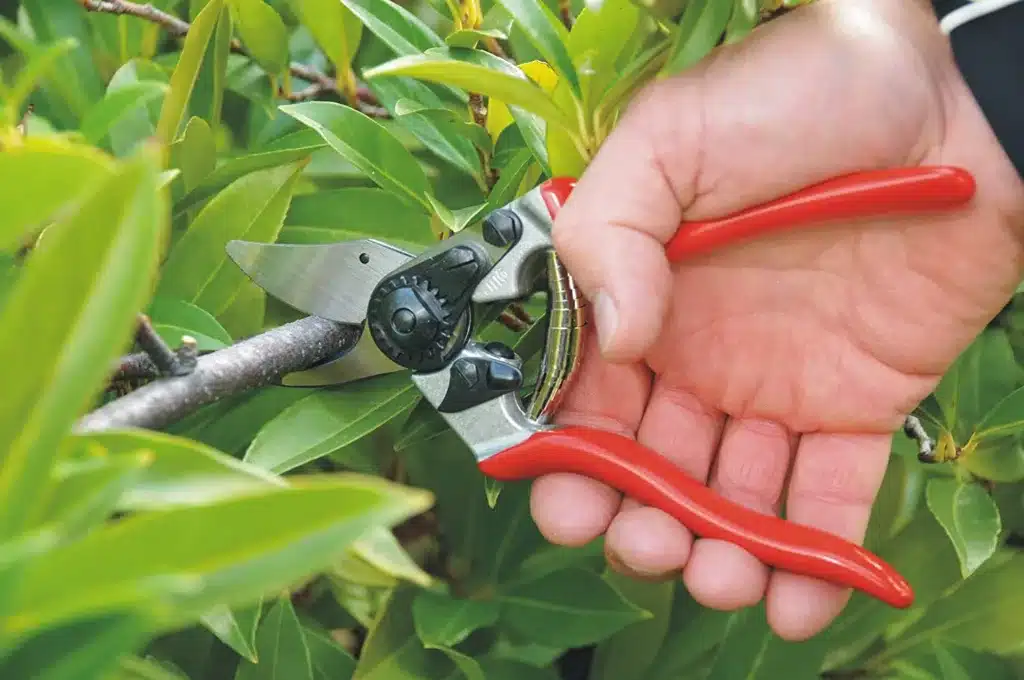
“Reap the Rewards of a Radiant Garden: Echinacea Deadheading Techniques
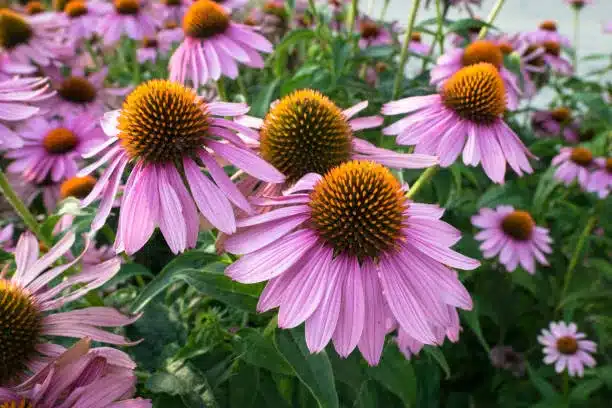
Including Echinacea, also known as Coneflower, in your deadheading routine can stimulate a stunning, long-lasting display in your garden.
Once a Coneflower bloom has faded, use clean, sharp secateurs to cut the stem just above the next set of leaves or budding flower.
This simple technique, when performed regularly from mid-summer to early fall, the usual blooming period of Echinacea, will promote a more robust bloom production, contributing to the overall vibrancy of your garden.
FAQ:
1. Can I leave some of the Echinacea flowers to develop seeds?
Absolutely! While deadheading promotes more flowering, leaving some spent blooms can provide seeds that attract birds during the fall and winter. It also allows Echinacea to self-seed for the next season, promoting natural growth in your garden.
“Flourishing Fuchsias Unveiled: Expert Deadheading Techniques from our Deadheading Flowers List!”
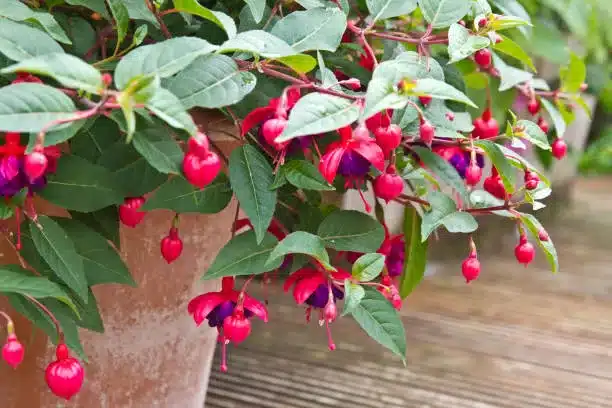
Adding Fuchsias to your deadheading flowers list can significantly extend their blooming season and promote healthier growth.
To deadhead a Fuchsia, locate the faded flowers and using your fingers or a pair of clean, sharp pruning shears, gently pinch or cut them off at the base of the flower stem.
Regularly performing this simple task from late spring to early fall, which is the typical flowering period for Fuchsias, leads to more vigorous growth and a stunning cascade of vivid blossoms that can elevate any garden display.
FAQs:
1. What are the benefits of adding Fuchsias to my Deadheading Flowers List?
Deadheading Fuchsias encourages the growth of new blossoms by directing the plant’s energy towards producing flowers rather than seeds. It also extends the flowering season, giving you a garden full of vibrant Fuchsias for a longer time.
2. Can Fuchsias be deadheaded too often?
Deadheading should be done as soon as the flowers fade or die, and it’s hard to overdo it. Regular deadheading encourages Fuchsias to produce more blooms and is a crucial aspect of their care. However, always ensure you’re gentle to avoid damaging the plant.
“Unleash a Burst of Blooms: Deadheading Geraniums”

Geraniums are known for their vibrant blooms and longevity, especially when incorporated into your deadheading routine.
Identify the faded or spent blooms, and follow the stem to the node where it joins another stem or leaf. Using a pair of clean, sharp secateurs, cut the stem at this point.
Implementing this method during the Geranium’s flowering season, typically between early spring and early fall, ensures an abundance of fresh blooms and a visually striking display in your garden.
FAQs:
1. Why should I include Geraniums in my Deadheading Flowers List?
Deadheading Geraniums not only keeps your plants looking neat, but also encourages the production of new flowers by redirecting the plant’s energy from seed production to bloom growth. This results in a more extended and abundant flowering period.
2. Is it possible to overdo it when deadheading Geraniums?
Deadheading is a beneficial practice that’s hard to overdo. However, it’s essential to be gentle to avoid damaging the plant. Also, using clean, sharp tools is vital to prevent the spread of disease.
“Harness the Power of Pruning: Deadheading Hydrangeas for Breathtaking Blooms!”
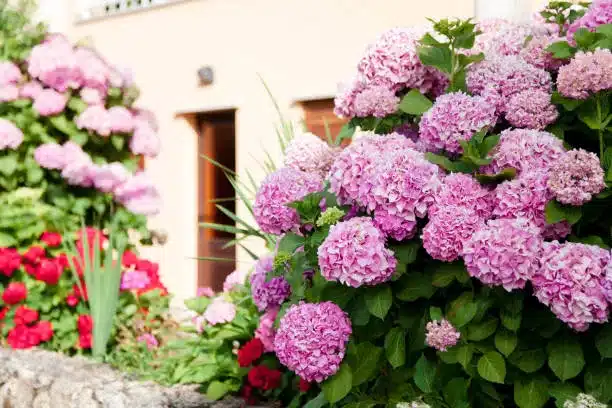
Deadheading Hydrangeas involves removing spent blooms to help the plant devote its energy to growth and health.
For many types of Hydrangeas, simply prune the old flower heads down to the first set of large, healthy leaves. However, timing matters: for most Hydrangeas, deadheading should be done as blooms begin to fade, usually late summer or fall.
But remember, some species like Oakleaf and Hydrangea paniculata bloom on old wood, and shouldn’t be deadheaded until late winter or early spring to avoid cutting off next season’s blooms.
FAQs:
1. Does deadheading Hydrangeas encourage new blooms?
Unlike many other plants, deadheading Hydrangeas doesn’t necessarily stimulate new flower growth. Instead, it helps the plant focus its energy on root and foliage development, improving overall plant health.
2. How can I tell if I’ve deadheaded my Hydrangea too much?
Over-pruning or excessive deadheading might lead to fewer blooms, as some Hydrangeas produce flowers on the previous year’s growth. If you notice a decrease in flowering following a season of heavy pruning, consider easing up on your deadheading efforts next season.
“Iris Invigoration: Maximize Blooms with Deadheading Techniques!”
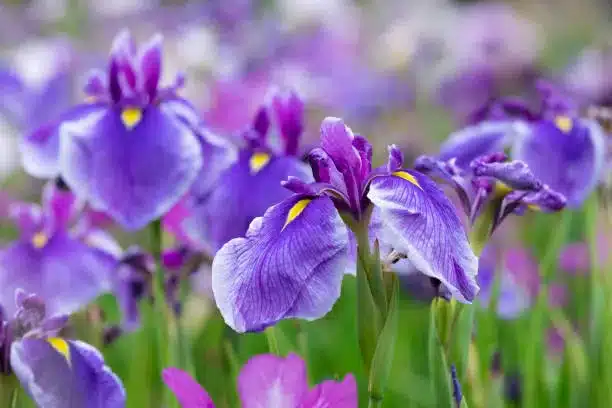
Irises are known for their uniquely beautiful blossoms, and deadheading can help keep your irises looking their best.
Begin by identifying spent blooms, and then cut the flower stalk down to the base of the plant without disturbing the leaves.
Deadheading Irises after blooming, usually in late spring or early summer, prevents seed production, helping the plant to conserve energy for the following year’s growth and bloom.
FAQs:
1. Why is it important to deadhead Irises?
Deadheading Irises helps the plant to redirect its energy from seed production to the development of the rhizome (root system), resulting in stronger plants and more impressive blooms in the following year.
2. What should I do if my Iris isn’t blooming despite deadheading?
Irises may not bloom for several reasons such as lack of sunlight, overcrowding, or insufficient nutrients. If your Irises aren’t blooming despite regular deadheading, consider relocating to a sunnier location, dividing the rhizomes, or adding a balanced fertilizer to the soil.
“Jubilant Jasmines Await: Discover Jasmine Deadheading Techniques in Our Comprehensive Deadheading Flowers List!”
Jasmines are known for their intoxicating fragrance and delicate blooms. Including them in your deadheading flowers list can ensure a healthier, more vibrant plant.
Once a Jasmine flower has faded, locate the stem below the bloom and make a clean cut with sharp, sterilized shears.
This simple technique, performed regularly during the Jasmine’s blooming period (typically late winter to early spring), will help your Jasmine redirect energy from seed production to new growth, contributing to a more abundant bloom in your garden.
FAQs:
1. Why is it beneficial to include Jasmines in my Deadheading Flowers List?
Deadheading Jasmines helps the plant to direct its energy towards producing more blooms and new growth instead of seed production. This can result in a longer blooming period, providing more of the beautiful, fragrant flowers Jasmines are loved for.
2. How often should I deadhead Jasmines?
Deadheading should be done as soon as the flowers start to fade or wilt. Regular deadheading throughout the blooming season will help ensure the continuous growth and flowering of your Jasmine plant.
“Knockout Secrets Unveiled: Master the Art of Deadheading Knock Out Roses for a Stunning Display!”

Knock Out Roses, a hardy and disease-resistant breed of roses, have become a gardener’s favorite due to their ability to bloom from spring until the first hard frost. They are more low-maintenance compared to most traditional rose varieties, which require more extensive care and are more susceptible to diseases.
To deadhead a Knock Out Rose, locate the spent blooms and follow the stem down to the first cluster of five leaflets. Then, using a pair of sharp, sterilized pruning shears, cut the stem at an angle just above this point.
Regularly performing this simple task throughout the blooming season promotes healthy growth, leading to a prolific display of bright, fresh blossoms that can significantly enhance the aesthetic appeal of your garden.
FAQs:
1. How do Knock Out Roses differ from regular roses in terms of deadheading?
While traditional roses often require precise deadheading and extensive care, Knock Out Roses are bred to be low maintenance and self-cleaning, meaning they will naturally drop spent blooms. However, periodic deadheading can help encourage a more abundant and continuous bloom.
2. Can Knock Out Roses survive without deadheading?
Yes, they can. Knock Out Roses are designed to be self-cleaning, meaning they’ll drop their spent blooms on their own. However, deadheading can enhance the plant’s appearance, encourage more blooming, and ensure a cleaner garden.
“Lavish Lilies in Bloom: Deadheading Techniques for a Show-Stopping Display!”
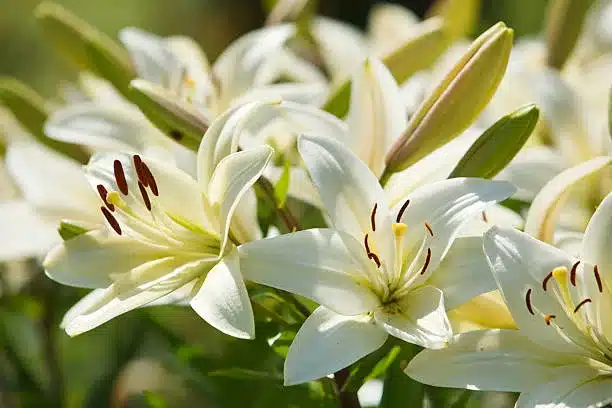
Deadheading Lilies can play a vital role in the plant’s health and the vibrancy of its blooms. When a Lily flower has faded, take a pair of clean, sharp secateurs and cut the flower stalk right below the spent bloom, leaving as much foliage as possible.
This technique helps the plant channel its energy into bulb growth rather than seed production, which can result in a more robust display in the following season.
FAQs:
1. Why should I bother deadheading Lilies if they only bloom once per season?
Although Lilies bloom only once per season, deadheading can benefit the plant by redirecting its energy from seed production to the development of the bulb, which can result in larger and more vigorous blooms in the following year.
2. How frequently should I deadhead Lilies?
Lilies should be deadheaded as soon as the flower fades. Keeping up with this task throughout the blooming period can help maintain the plant’s vitality and enhance its aesthetic appeal.
3. What happens if I don’t deadhead my Lilies?
If you don’t deadhead your Lilies, the plants will put their energy into developing seeds instead of strengthening their bulbs. This could result in fewer or smaller flowers the following season.
“Mighty Marigolds Revealed: Unearth the Best Deadheading Techniques from our Deadheading Flowers List!”

Adding Marigolds to your deadheading flowers list can significantly enhance their bloom production, creating a splash of vibrant color in your garden.
Once a Marigold bloom starts to wilt, trace the stem down to the nearest set of leaves and make a clean cut with a pair of sharp, sterilized shears.
Regularly performing this task throughout the blooming period, which typically runs from early summer until the first frost, will direct the plant’s energy away from seed production and towards the growth of new, robust flowers.
FAQs:
1. Why should I include Marigolds in my Deadheading Flowers List?
Deadheading Marigolds can encourage more prolific blooming by redirecting the plant’s energy from seed production to the growth of new flowers. This results in a more prolonged and vibrant display of blooms.
2. Can Marigolds be deadheaded too often?
Deadheading should be done as soon as the flowers begin to fade or die, and it’s hard to overdo it. Regular deadheading encourages Marigolds to produce more blooms and is an essential aspect of their care. However, always ensure you’re gentle to avoid damaging the plant.
“Nurturing Nasturtiums: Unveil the Magic of Deadheading for a Vibrant Bloom Display!”
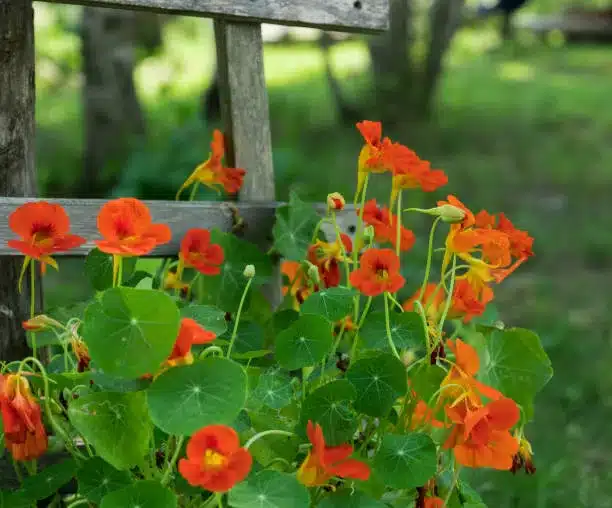
Deadheading Nasturtiums can significantly enhance their blooming capabilities, adding a pop of color to your garden.
Once a Nasturtium flower fades, simply follow the stem to its base and make a clean cut using a pair of sharp, sterilized secateurs.
Regularly employing this method throughout their bloom season, usually late spring through fall, will redirect the plant’s energy from seed production to new flower growth, leading to a more robust and prolonged floral display.
FAQs:
1. Why is it beneficial to deadhead Nasturtiums?
Deadheading Nasturtiums prevents the plant from directing its energy towards seed production. Instead, it encourages the growth of fresh blooms, resulting in a more vibrant and prolonged flowering display.
2. When is the best time to deadhead Nasturtiums?
Deadheading should ideally be done as soon as flowers start to fade. Keeping up with this routine throughout the blooming season can significantly improve your Nasturtiums’ visual appeal and overall health.
3. What happens if I don’t deadhead my Nasturtiums?
If Nasturtiums are not deadheaded, they’ll begin producing seeds, which signals the plant to stop flower production. Although this might not severely harm the plant, it will likely result in fewer blooms and a shorter flowering season.
“Orchid Opulence: Decoding Deadheading Techniques in Our Deadheading Flowers List!”
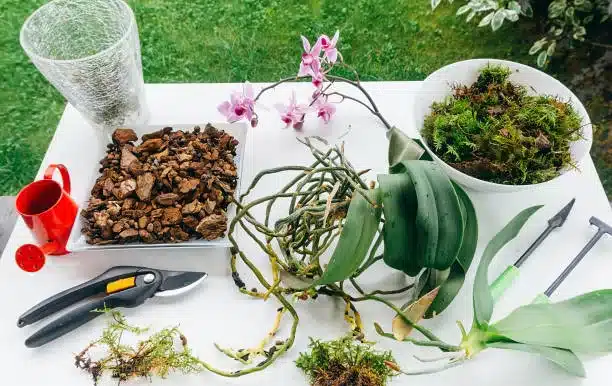
Adding Orchids to your deadheading flowers list requires some knowledge about the specific types of Orchids you’re growing. Certain varieties, like Phalaenopsis (Moth Orchids), benefit from a unique form of deadheading.
After the flowers fade, rather than removing just the spent blooms, you should cut the spike (flower stem) about an inch above a node, or joint in the stem. This can often stimulate the Orchid to produce a secondary spike with more blooms.
However, for most other types of Orchids, including Dendrobiums and Oncidiums, the whole flower spike should be cut off at the base after all flowers have faded. These types do not typically rebloom from old spikes and cutting the spike back helps the plant to focus its energy on new growth.
It’s important to note that some Orchids, like Cattleyas and Vandas, do not need to be deadheaded at all. The old flowers naturally drop off and new blooms emerge from new growth.
FAQs:
1. Why are some Orchids included in the Deadheading Flowers List and others are not?
Certain Orchids can benefit from deadheading as it helps the plant conserve energy for producing new blooms. Other types naturally shed their flowers and new blooms emerge from new growth. Understanding the needs of your specific Orchid type is key to proper care and maintenance.
2. What should I do if my Orchid doesn’t rebloom after deadheading?
Lack of reblooming can be due to several factors including inadequate light, incorrect watering, or insufficient nutrients. If your Orchid doesn’t rebloom after deadheading, evaluate its overall care routine to ensure it is getting everything it needs to thrive.
3. Can I harm my Orchid by deadheading?
If done correctly, deadheading should not harm your Orchid. However, always ensure that you’re using clean, sharp tools to prevent disease transmission and damage to the plant. For Orchids, it’s important to understand the specific needs of the variety you are growing as not all benefit from deadheading.
“Prolific Pansies: Master Deadheading Techniques for a Radiant Garden Display!”
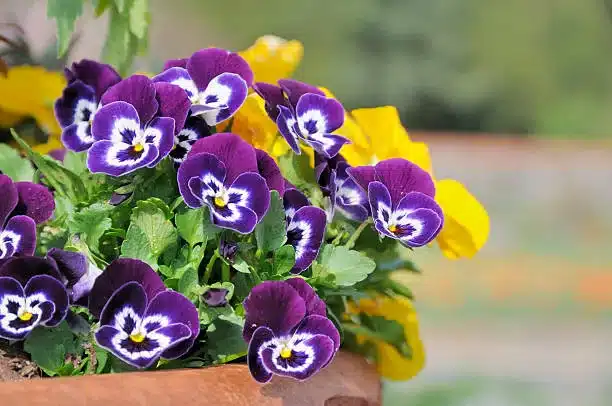
Deadheading Pansies can significantly improve the longevity and vibrancy of their blooms. To deadhead a Pansy, locate the spent flowers and follow the stem back to the point where it meets a set of leaves.
Use a pair of sharp, sterilized pruning shears or simply use your fingers to pinch off the stem.
Regularly performing this simple task throughout the blooming period, which is typically spring and fall, helps to direct the plant’s energy from seed production towards new flower growth, resulting in a more abundant and continuous floral display.
FAQs:
1. Why is it necessary to deadhead Pansies?
Deadheading Pansies encourages the plant to produce more blooms, giving you a longer-lasting and more colorful display. By removing spent flowers, you prevent the plant from focusing on seed production, thus encouraging new flower growth.
2. How often should I deadhead Pansies?
Pansies should be deadheaded as soon as the flowers start to fade or wilt. Keeping up with this task throughout the blooming season can significantly improve the appearance and health of your Pansies.
3. Can I harm my Pansies by deadheading them?
As long as you’re careful and use either clean, sharp tools or your fingers to remove the spent flowers, deadheading should not harm your Pansies. In fact, regular deadheading can contribute significantly to their overall health and vibrancy.
“Queen Anne’s Elegance: Unveil Expert Deadheading Techniques from our Deadheading Flowers List!”
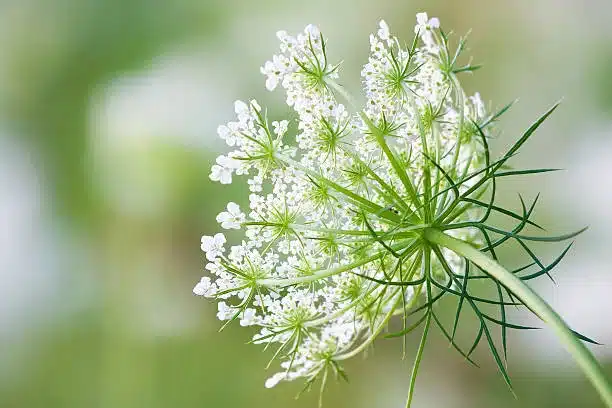
Adding Queen Anne’s Lace to your deadheading flowers list can encourage healthier growth and control the plant’s tendency to self-seed aggressively.
Locate the spent blooms, and using a pair of sharp, sterilized secateurs, cut the flower stem back to the base. This technique prevents the plant from setting seeds, thus directing energy back into root and foliage growth.
Note that deadheading Queen Anne’s Lace is optional as the plant will naturally self-seed and continue to proliferate if left to its own devices.
FAQs:
1. Should I include Queen Anne’s Lace in my Deadheading Flowers List?
If you want to prevent Queen Anne’s Lace from self-seeding and spreading too vigorously in your garden, including it in your deadheading routine can be beneficial. However, if you’re keen on naturalizing a wildflower area, you might choose to let it set seeds.
2. What happens if I don’t deadhead Queen Anne’s Lace?
Queen Anne’s Lace can self-seed aggressively if not deadheaded, which may be desirable in some settings. However, in a managed garden setting, this can lead to the plant spreading more than desired. Deadheading helps control its spread while also encouraging more energy to be directed to root and foliage growth.
“Reviving Roses: Master the Art of Deadheading for a Lush, Blooming Garden!”
Deadheading Roses is a critical aspect of their care and can enhance their growth and flowering significantly.
To deadhead a Rose, locate the spent bloom and follow the stem down to the first set of five leaves. Using sharp, sterilized pruning shears, make a clean diagonal cut about 1/4 inch above this leaf set.
Regularly performing this task throughout the blooming period, which typically spans spring to fall, will direct the plant’s energy away from seed production and towards the growth of new blooms, leading to a more robust and vibrant display.
FAQs:
1. Why is deadheading Roses important?
Deadheading Roses helps to direct the plant’s energy towards new bloom production rather than seed formation. This results in more abundant and vibrant blooms, prolonging the flowering season and enhancing the overall health and appearance of the plant.
2. How frequently should I deadhead Roses?
Deadheading should be done as soon as the Rose bloom starts to fade or die. Regular deadheading throughout the blooming period can lead to more vigorous flowering and improved plant health.
3. Can I harm my Roses by deadheading?
As long as you’re careful to use clean, sharp tools and make the cut at the correct location, deadheading should not harm your Roses. In fact, it’s a critical part of their care that can significantly enhance their blooming and overall vitality.
“Sunflower Splendor: Unlock the Secrets of Deadheading for a Brighter Garden!”

Deadheading Sunflowers can help promote growth and control where they sow their seeds. Once a Sunflower’s bloom starts to droop and lose its petals, it’s time to deadhead.
Trace the stem from the flower head down to the first set of healthy leaves and, using a pair of sharp, sterilized shears, make a clean cut. This will encourage the plant to grow more blooms, particularly in multi-stemmed varieties.
For single-stemmed varieties, deadheading won’t lead to more blooms in the same season but will prevent the Sunflower from self-seeding in unwanted areas.
FAQs:
1. Should I deadhead Sunflowers?
Whether or not to deadhead Sunflowers depends on your goals. If you’re growing multi-stemmed varieties and want to encourage more blooms, or if you want to prevent self-seeding in your garden, then deadheading is beneficial. If you wish to attract birds or harvest Sunflower seeds, then you should not deadhead the flowers.
2. Can deadheading harm my Sunflowers?
Deadheading, when done properly with clean, sharp tools, should not harm your Sunflowers. Instead, it can help to encourage a more orderly growth pattern and can enhance the appearance and health of the plant.
“Tantalizing Tulips: A Guide from our Deadheading Flowers List to Boost Bloom Vigor!”
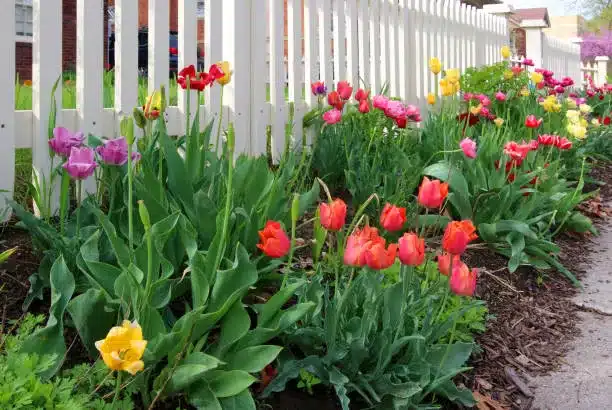
As you go through your Deadheading Flowers List, don’t forget Tulips – one of spring’s most beloved blooms. Deadheading Tulips can encourage healthier plant growth and a better bloom display in the following season.
Once a Tulip bloom is spent and begins to fade, using a pair of sharp, sterilized pruning shears, snip off the flower head, leaving the foliage intact. This directs the plant’s energy towards the bulb, strengthening it for the next blooming cycle.
Remember to leave the foliage until it has fully yellowed and died back, as it continues to photosynthesize and provide energy to the bulb.
FAQs:
1. Why should Tulips be included in my Deadheading Flowers List?
Deadheading Tulips helps redirect the plant’s energy away from seed production and towards the bulb, resulting in a healthier plant and potentially larger, more vigorous blooms the following year.
2. Can I harm my Tulips by deadheading?
As long as you’re careful to use clean, sharp tools and only remove the spent flower, leaving the stem and leaves intact, deadheading should not harm your Tulips. On the contrary, it can improve their vitality and performance in the following blooming season.
“Upright Sedums Unveiled: Master Deadheading Techniques for a Dense, Colorful Display!”

Deadheading Upright Sedums can encourage a denser growth habit and a more abundant bloom display.
As soon as the flower clusters show signs of fading, use a pair of sharp, sterilized pruning shears to snip off the flower heads, tracing the stem down to the next set of leaves or buds.
This technique helps redirect the plant’s energy towards new growth and bloom production, ensuring a vibrant and lush display in your garden.
FAQs:
1. Why should I deadhead Upright Sedums?
Deadheading Upright Sedums promotes a denser growth habit and a more prolific bloom display. By removing spent blooms, the plant’s energy is redirected towards new growth and bloom production, enhancing the overall health and appearance of the plant.
2. Can I harm my Upright Sedums by deadheading?
As long as you use clean, sharp tools and make your cuts above a set of leaves or buds, deadheading should not harm your Upright Sedums. In fact, it can contribute to a denser, more colorful plant display.
“Vibrant Upright Violas: Unlock the Art of Deadheading for Continuous Blooming Delight!”
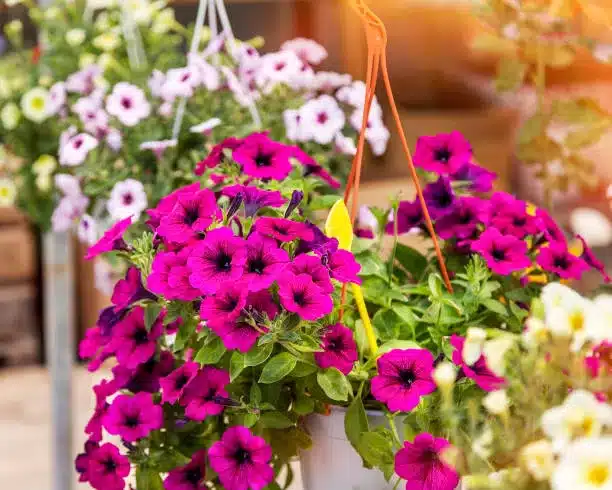
To keep your Upright Violas blooming and looking their best, deadheading is key. As soon as a Viola flower begins to fade or wilt, pinch or snip off the stem just above a set of healthy leaves using your fingers or clean, sharp pruning shears.
Regularly performing this deadheading technique throughout the blooming season will promote continuous flowering and prevent the plant from diverting energy into seed production.
This ensures your Upright Violas stay vibrant and colorful, adding beauty to your garden or containers.
FAQs:
1. Why is deadheading important for Upright Violas?
Deadheading Upright Violas helps promote continuous blooming by redirecting the plant’s energy towards producing new flowers instead of seeds. It encourages the plant to invest its resources in creating fresh blooms, ensuring a longer-lasting and more visually appealing display.
2. How often should I deadhead Upright Violas?
Deadhead your Upright Violas regularly throughout the blooming season. Check them frequently and remove faded or wilted flowers promptly. By keeping up with deadheading, you’ll encourage the plant to continue producing new blooms and extend the overall blooming period.
“Wave Petunias Unleashed: Master the Art of Deadheading for a Cascade of Color!”
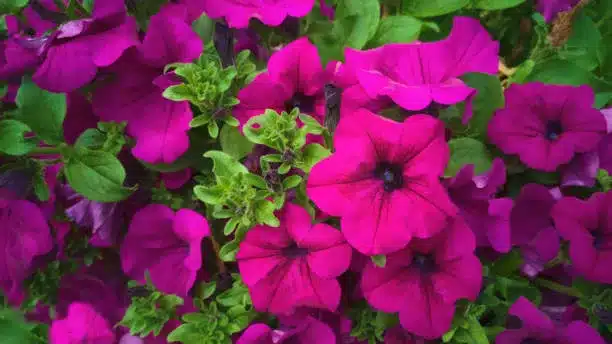
Wave Petunias are known for their vigorous growth and abundant blooms, and deadheading is essential to maintain their beauty and promote continuous flowering.
When a Wave Petunia flower begins to fade, trace the stem down to where it meets a set of healthy leaves or new buds. Use your fingers or sharp, sterilized pruning shears to remove the spent flower just above this point.
Regularly deadheading Wave Petunias throughout the blooming season will encourage new bud formation, resulting in a stunning cascade of colorful blooms that will transform your garden or containers.
FAQs:
1. Why should I deadhead Wave Petunias?
Deadheading Wave Petunias helps stimulate continuous blooming by redirecting the plant’s energy from seed production to the development of new buds and flowers. It ensures a more prolonged and abundant display of vibrant blooms.
2. How often should I deadhead Wave Petunias?
Deadhead your Wave Petunias regularly, ideally as soon as the flowers begin to fade. Check them frequently and remove spent flowers promptly to promote the growth of new buds and encourage continuous flowering. By staying consistent with deadheading, you’ll enjoy a more prolific bloom throughout the season.
“Stunning Strawflowers Unveiled: Master Deadheading Techniques for Endless Beauty!”
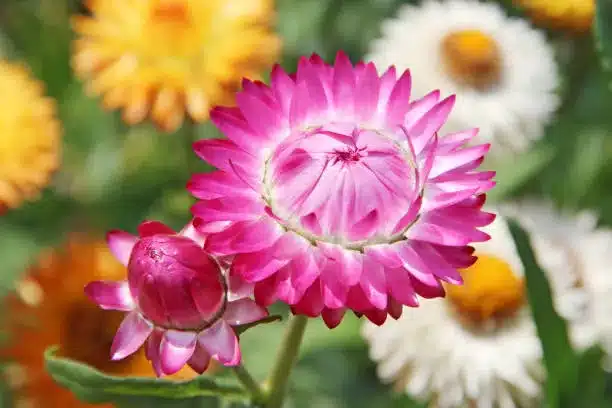
Deadheading Xerochrysum, commonly known as Strawflowers, is essential for promoting continuous blooms and maintaining their stunning appearance.
As each Strawflower blossom starts to fade, trace the stem down to where it meets a set of healthy leaves or new buds. Using clean, sharp pruning shears, make a clean cut just above this point.
Regularly deadheading Strawflowers throughout their blooming season ensures the plant’s energy is focused on producing fresh blooms, resulting in a continuous display of vibrant and captivating flowers.
FAQs:
1. Why is deadheading important for Strawflowers?
Deadheading Strawflowers is crucial to promote continuous blooming. By removing spent blooms, you redirect the plant’s energy from seed production to the growth of new flowers. This results in an extended blooming period and a more visually appealing garden.
2. How often should I deadhead my Strawflowers?
Deadhead your Strawflowers regularly, preferably as soon as the flowers start to fade. Check them frequently and remove the spent blossoms promptly to encourage the growth of new buds and continuous flowering. Consistent deadheading will help you enjoy a profusion of fresh and vibrant blooms throughout the season.
“Yarrow Euphoria: A Guide from our Deadheading Flowers List For Endless Beauty
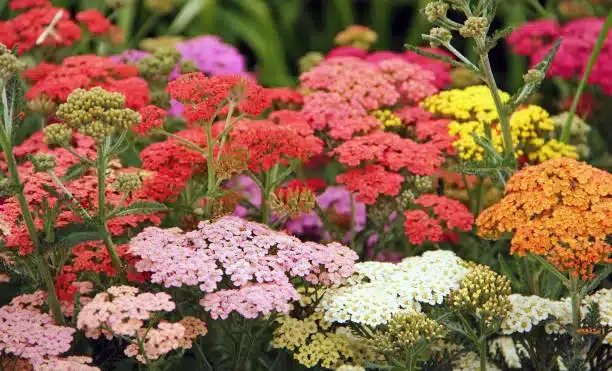
Deadheading Yarrow is a simple yet effective practice that can enhance its blooming potential and overall appearance.
When Yarrow flowers begin to fade, locate the stem below the spent blooms and trace it down to where it meets a set of healthy leaves or new buds. Using clean, sharp gardening shears, make a clean cut just above this point.
Regular deadheading throughout the blooming season, which typically lasts from late spring to early summer, will encourage the growth of fresh blooms and promote a more abundant and captivating display of Yarrow’s vibrant colors.
FAQs:
1. Why should I include Yarrow in my Deadheading Flowers List?
Deadheading Yarrow is beneficial for prolonging its blooming period and maintaining its overall beauty. By removing spent blooms, you direct the plant’s energy towards producing new flowers, resulting in a more impressive and long-lasting Yarrow display.
2. Can I deadhead Yarrow after its blooming season?
Yarrow is a perennial plant, and while deadheading during its blooming season is ideal, you can still deadhead Yarrow after its blooming period to tidy up the plant’s appearance. However, keep in mind that Yarrow may not produce new blooms until the following year’s blooming season.
“Zesty Zinnias Unveiled: Master the Art of Deadheading for a Blooming Extravaganza!”
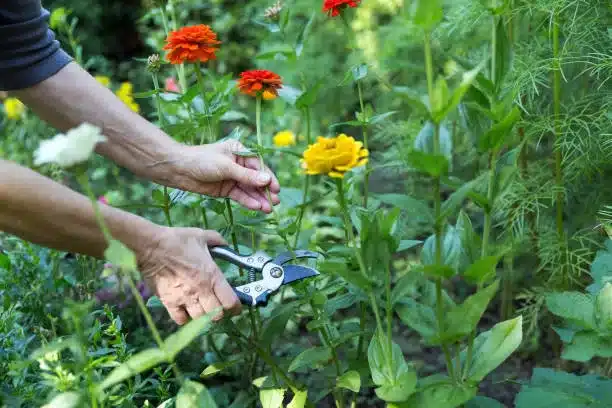
Deadheading Zinnias is a vital practice to ensure continuous blooming and to keep your garden vibrant.
As Zinnia flowers start to fade, locate the stem just below the spent bloom and follow it down to the next set of leaves or lateral bud. Using sharp, sterilized pruning shears, make a clean cut just above this point.
Regularly deadheading Zinnias throughout the blooming season, typically from summer to fall, will encourage the growth of new buds and flowers, resulting in a profusion of colorful blooms that will elevate the beauty of your garden.
FAQs:
1. Why is deadheading important for Zinnias?
Deadheading Zinnias is crucial to promote continuous blooming. By removing spent flowers, you redirect the plant’s energy from seed production to the development of new buds and flowers. This leads to a more abundant and prolonged display of colorful blooms.
2. How often should I deadhead Zinnias?
Deadhead your Zinnias regularly, ideally as soon as the flowers fade or wilt. Check them frequently and remove spent blooms promptly to stimulate the growth of new buds and encourage continuous flowering. Consistent deadheading will ensure a constant burst of color in your garden throughout the blooming season.
Deadheading Flowers List Wrap Up
In conclusion, this article has revealed the remarkable secret of deadheading flowers and provided a comprehensive list of flowers from A-Z that benefit from this practice. By now, you understand that deadheading is not just a simple act of removing spent blooms; it is a powerful technique that can transform your garden into a blooming paradise.
We have explored the methods, techniques, and best results for deadheading various flowers, from Roses to Sunflowers, Marigolds to Zinnias. Each flower has its own unique requirements and considerations, but the common thread is the redirection of the plant’s energy from seed production to new growth and blooming.
Throughout the article, we emphasized the importance of regular deadheading, the correct techniques to follow, and the benefits it brings. By removing faded flowers, we allow plants to focus their energy on producing more vibrant blooms, extending the blooming period, and enhancing overall plant health.
We have answered FAQs that gardeners commonly encounter, ensuring that you have the knowledge to confidently implement deadheading in your own gardening endeavors. As you embark on your deadheading journey, remember the immense impact this practice can have on your garden’s beauty and vitality.
Visualize the stunning displays of vibrant colors, the fragrant scents filling the air, and the joyful feeling that comes from cultivating a flourishing garden. With each snip of a spent bloom, you are fostering new growth and unlocking the potential for a breathtaking floral showcase.
So, go forth and embrace the power of deadheading in your gardening routine. Whether you are tending to delicate roses or cheerful daisies, meticulous deadheading will be your secret weapon for a garden that dazzles with life and captivates all who behold it.
Let your garden bloom with radiant splendor, and let your passion for gardening flourish alongside it. Happy deadheading, and may your garden forever be a testament to the beauty and rewards of your labor!
Check Our Landscape Projects On Facebook
Hi there, I’m Mark Apletree, a gardening enthusiast with a passion for gardening, and gardening tools. I’ll be your go-to guide for all things related to gardening. The purpose of this website is to assist you in selecting the most suitable garden gear that meets your specific requirements.
See All Posts
